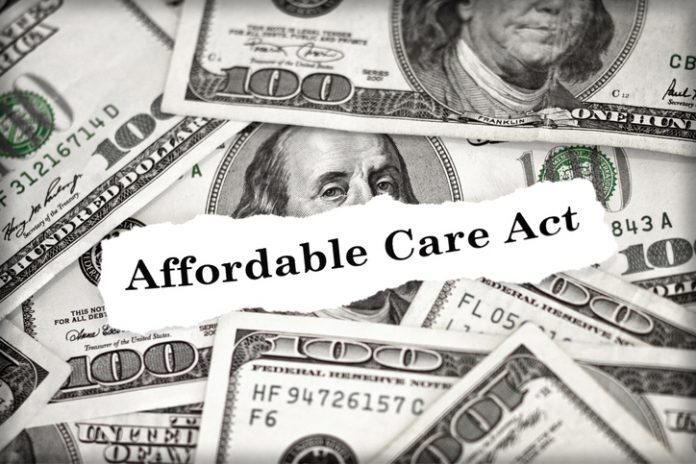Congressional Democrats and the Biden administration used the $1.9 trillion American Rescue Plan Act passed this year to boost enrollment in the Affordable Care Act (ACA), also known as Obamacare.
The American Rescue Plan Act lifts the income cap so more people will become eligible for ACA subsidies. The subsidies apply solely to plans offered on the ACA exchanges, and they go directly to insurance companies, not to consumers. Congress set aside $34 billion in the legislation for insurance companies in the hope of luring higher-income people to the ACA and adding up to one million enrollees to Obamacare.
Enhanced subsidies were based on the idea that millions of people lost insurance coverage during the pandemic. In fact, as was pointed out at a May 19 Galen Institute health care discussion, insurance participation was up 5.7 million over 2019. Subsidies were going to insurance companies to cover people who were already insured. Because there is little competition on the ACA exchanges, and with subsidies going directly to insurers, insurance companies have little incentive to keep the price of premiums low. This may be one of the reasons why health insurance premiums have risen 50 percent over the past ten years.
ACA Enrollees Under Expectations
The need to boost ACA enrollment is real. According to Galen Institute senior fellow Brian Blase, Obamacare was projected to have 25 million enrollees by now. Instead, only approximately 10 million people carry ACA insurance. This year’s enrollment period for Obamacare was extended to August, and, thanks to the subsidies contained in the American Rescue Plan, some premiums are as low as $10 a month, or even at zero.
By extending Obamacare subsidies to higher-income people, the new law may push some employers, especially those with older and lower-income employees, to stop offering health care insurance altogether. Instead, those workers will be sent to the Obamacare exchanges, because the subsidies will exceed any tax benefits employers get by offering health insurance.
This is the exact opposite of what the Trump administration sought through its push for wider use of Health Reimbursement Arrangements (HRAs). Trump’s individual coverage HRAs (ICHRAs) would allow employers to reimburse employees’ individual marketplace premiums using tax-advantaged compensation, under certain conditions.
At a virtual conference in May put on by the Leonard Davis Institute for Health Economics at the University of Pennsylvania and the United States of Care, the Galen Institute’s Blase pointed out that “three-quarters of health plans offered by employers offer no choice.” Under ICHRAs “workers finally have choices.” Blase suggested that employers could implement such plans incrementally by offering them to new and part-time employees, then offering them to the entire workforce.
In another move that would restore individual freedom, Blase recommends giving block grants to states to help them deal with the needs of low-income people enrolled in Medicaid as well as reducing the federal matching funds for the program, from 95 percent to 85 percent. But the idea is unlikely to win favor with the Biden administration or congressional Democrats, who are loath to relinquish federal control over the program.
Reasons Against Permanent Subsidies
President Joe Biden’s January 28 executive order took steps to revoke the expanded use of HRAs. Determined to push more people into the Obamacare exchanges, the Biden administration and congressional Democrats also want to make the expanded ACA subsidies permanent.
This is a bad idea for six reasons, says Doug Badger in a May 26 “backgrounder” report published by The Heritage Foundation. In addition to giving employers a reason to drop health coverage, the enhanced subsidies would go to people already insured on the exchanges, including high-income earners. For example, a family of four headed by a couple in their forties earning as much as $230,000 a year would qualify for a $10,000 premium subsidy.
The costs of premiums could skyrocket because the subsidy goes directly to the insurance company. Consumers would be abstracted from premium increases and insurers have less incentive to win their business on value.
“Congress erred in enlarging premium subsidies last March,” the report concludes. “It should not compound that error by making that expanded subsidy structure permanent.”
Keeping the subsidies from expiring at the end of 2022 will require legislation, either inserting it into the American Families Plan, a sweeping social policy measure, or even putting it into the administration’s infrastructure/Green New Deal bill. Either approach would have to be done through the budget reconciliation process, which requires a simple majority in the Senate for passage. Otherwise, the provision would have to be included in regular legislation, putting it at risk of death by filibuster in the Senate, as recently happened to the Democrat-sponsored bill to increase the federal role in elections.
Internet info:
Doug Badger, “Obamacare Subsidies: Six Reasons Congress Should Not Make Temporary Increase Permanent,” The Heritage Foundation, May 26, 2021




















